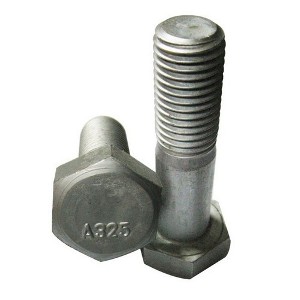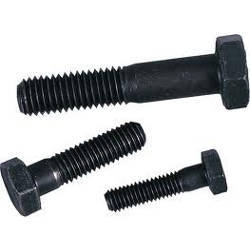Who knew steel assembly hardware could be so complex? There’s shop bolts verses field bolts, galvanized verses weathered bolts, different step bolts, tower bolts and the list continues.
So what are the different types of assembly hardware?
Well, for starters, assembly bolts may be designated as shop bolts or field bolts. Shop bolts are used to sub-assemble steel structures at the shop, whereas field bolts are shipped out to the field in containers (or whatever packaging) and are used to assemble steel structures at the job site by construction crews.
There’s also three factors to consider when determining what type of assemble hardware to use:
Length- based on the thickness of the joining parts, as well as considerations for your nut, washer and locking mechanism.
Diameter- needs to be able to withstand the load and strength requirements of the connection, and is also generally based on ASCE and AISC requirements.
Chemistry- a commonly used bolt is ASTM A325, but it’s important to keep in mind that there are two types of A325 bolts.
A325 bolts are available in both weathering and galvanized. Weathering bolts are designated as A325 – Type 3 while galvanized is A325 – Type 1. Some vendors typically assume galvanized hardware if not shown the Type 1 at the end.

Other common specifications for bolts include A394 and A193-B7.
ASTM A394, also known as tower bolts, are lower in strength than A325, which is high strength bolts, and are commonly used in lattice towers. ASTM A325 has a longer shank and only about 2 inches of threading, compared to A394, which is threaded the length of the bolt. You can reference Part 7 of the AISC Steel Construction Manual for additional details.

ASTM A193-B7 is being more commonly used in high strength connections, since they are extra high strength bolts. These bolts mainly come galvanized, and are commonly used in substation and transmission dead-end applications.
The industry standard for bolts is hex head, but they can also be round button head bolts and square headed bolts. Hex head bolts are six sided and are commonly used in assembly, button head bolts are often used for climbing bolts and square head bolts can be used for both assembly and climbing.
Step Bolts are generally designed by A394 Type 0 (galvanized - low carbon steel) or A394 Type 1 (galvanized - medium carbon steel) or Type 3 (weathering – medium grade steel). These are supplied as button head and here is an example of how they can be found on the shelf:

There are two strength requirements that go into bolted connection design:
Tensile Strength- resistance to forces applied through the longitudinal axis of the bolt.
Shear Strength- resistance to forces passing through the cross sectional area of the bolts
Yield Strength- when the bolt starts to deform

